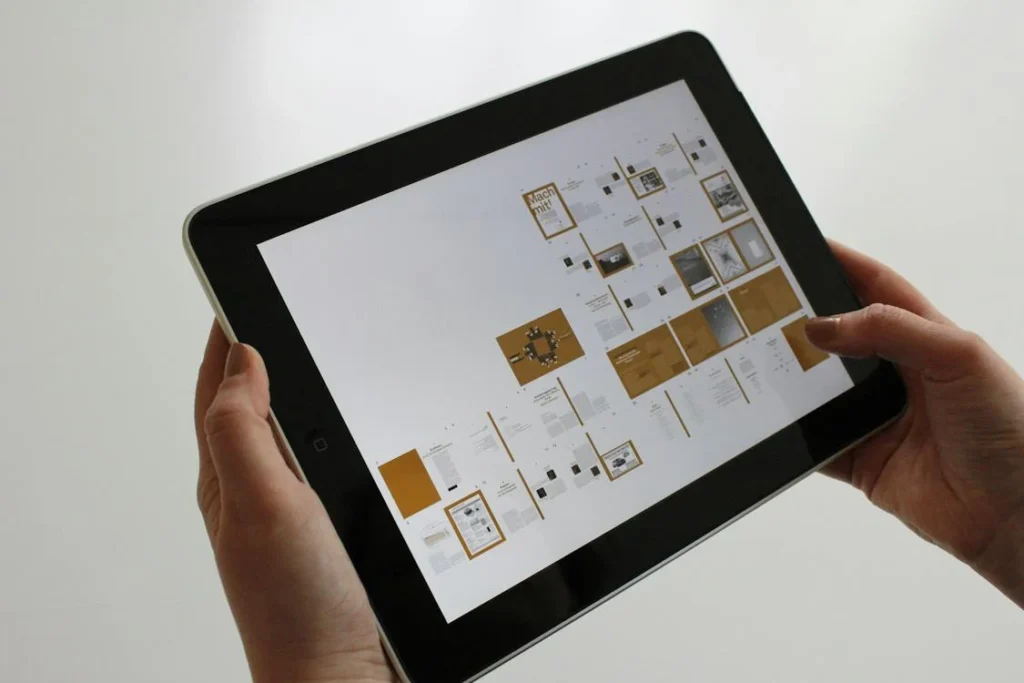Product Development Documentation Overview
Alright, folks, let’s chat about something that may sound as thrilling as watching paint dry but is absolutely key to not wrecking your product train—product development documentation. It’s your go-to buddy through the entire product development cycle, keeping your team on the same page and the gears running smoothly. Let’s dig into why getting a grip on documentation control is like not forgetting your map on a road trip.
Why You Can’t Skip Documentation Control
Think of documentation control as your backstage crew in the show of product development. It’s about keeping all the edits and updates of documents in line, so you know who did what and when. No more “I thought you said” mix-ups even when the whole team is scribbling on the same digital notebook.
Why it’s awesome:
| Benefit | What It Means for You |
|---|---|
| Keeps Confusion at Bay | Everyone’s free to jot down their two cents without the fear of muddling things up. It’s like giving everyone a megaphone while ensuring no one’s shouting over another. Teamwork makes the dream work, right? |
| Error? What Error? | Cuts down the oh-so-fun “oops” moments. Good version control smooths out paperwork hiccups, letting your team focus on what really matters without the fear of snake-pit meetings. |
| Boss of Integrity | All changes being noted mean fewer oopsie edits. Your doc stays rock-solid, and you know exactly who’s been tinkering with what. |
| History Time Machine | Track document changes like a detective on a case. This history is your best ally against lost info, making sure everyone can high-five over a job done right. |
Choosing the right version control software is like picking your superhero squad—editing tools, viewing permissions, team collab options, and full-on analytics are must-haves. It’ll make your product design and development feel like a well-oiled machine.
Focusing on documentation control means your team doesn’t get lost in the weeds of the product development stages regardless of how twisty the path gets. Grab more insights on new product strategies and how having your documentation game strong is crucial for a successful product launch.
Key Product Management Documents
When you’re in the thick of product development, a handful of documents pave the way for smooth sailing. These papers help keep the chaos in check by ensuring everyone’s on the same page, heading in the right direction. Get the hang of these, and you’re all set for hitting those big goals!
Objective & Key Results (OKRs)
First in line is the Objective & Key Results (OKRs) doc—a must-have for laying down your targets. Your goals need to be weighty, clear-cut, and spot-on, while the results you’re eyeing should be crystal clear and easy to measure. This setup keeps your team laser-focused, working toward shared dreams and milestones (JustAnotherPM).
| Objective | Key Results |
|---|---|
| Expand market presence | Increase market share by 15% |
| Improve customer retention | Boost retention rate to 85% |
| Launch new features | Release 3 major features by Q2 |
Product Requirements Document (PRD)
Next up, the Product Requirements Document (PRD) is your blueprint for the project’s next chapter. Keep this document on its toes, updating it with your team’s feedback to ensure everyone’s on the same wavelength (JustAnotherPM).
The PRD is your go-to guide, laying out features, tackling problems head-on, and setting your success markers. It stitches together the whole shebang—from timelines to budgets—setting the stage for a trusting rapport between you and the crew (Appinventiv). Here’s what usually goes into a PRD:
| Component | Description |
|---|---|
| Features | What the product should do |
| Research Problem Statement | Challenges the product addresses |
| Success Metrics | How we’ll know if we’re winning |
| Engineering Details | The nuts and bolts for devs |
User Stories
User stories? They’re a nifty way of capturing what folks expect from your product. Think of them as little user wish lists. Each story tells you exactly what a user wants to achieve, spelled out simply. User stories usually go like this:
“As a [type of user], I want [a goal] so that [reason].”
These trusty tales give you a peek into what your customers are all about. They’re super helpful when you’re sorting out features by how much they matter to users, making sure you zero in on delivering the goods.
| User Story Example |
|---|
| “As a new customer, I want to create an account so that I can track my orders.” |
| “As a project manager, I want to generate reports to analyze team performance.” |
Getting these documents—OKRs, PRDs, and user stories—into your product playbook is like adding a turbo boost to your project. Hungry for more? Check out the product development life cycle or explore new product development strategies.
Essential Project Documentation
When you’re diving into product development, keeping your project documentation neat and tidy is like having a good road map. It makes life easier and keeps everyone on the same page. Let’s talk about three big hitters in project documentation: release notes, process documentation, and team documentation.
Release Notes
Release notes are like a newsletter from your engineering team. They’re all about what’s new, what’s tweaked, and which bugs have finally been squashed, along with when these changes are happening. Generally, the folks tuning into these notes are the engineering managers, engineers doing the heavy lifting, and product managers sipping their endless cups of coffee (JustAnotherPM).
Laying out your release notes clearly helps the team see how things are moving and lets everyone know what’s new with each product update. Here’s a handy-dandy example:
| Version | Release Date | Features/Changes |
|---|---|---|
| 1.0 | 2023-01-10 | Initial launch with core features |
| 1.1 | 2023-02-15 | Added user analytics dashboard |
| 1.2 | 2023-03-05 | Bug fixes and performance boosts |
Easy-to-read release notes keep everyone in the loop and give your clients and users a little window into the magic happening behind the scenes.
Process Documentation
Process documentation is like your team’s rulebook. It spells out the lowdown on your company’s way of working, especially in software development. This includes how your coding should look, the best ways to test, and the compliance boxes you need to tick (Archbee).
By setting all this out clearly, you make sure everyone knows what’s what and how to keep things running smoothly. Here’s what process documentation might look like:
| Process | Description |
|---|---|
| Code Review | Steps for peer reviews of code before it’s good to go |
| Testing | Strategies for testing each little bit, plus the big picture |
| Deployment | How to get your code live without a hitch |
With all-around clear processes, your team operates like a well-oiled machine, which makes the whole development ride a lot smoother.
Team Documentation
Team documentation is your team’s guidebook to working well together. It’s where you keep stuff like meeting notes, project schedules, and who does what (Archbee).
Here’s one way to sort out your team documentation:
| Document Type | Purpose |
|---|---|
| Meeting Minutes | Keep a record of decisions and what needs to get done next |
| Project Plans | Spell out the timeline, big steps, and what’s expected |
| Role Responsibilities | Outline who’s responsible for what on the team |
Robust team documentation helps everybody work together better, so things don’t fall through the cracks, making your product development efforts much more successful.
Keeping your project documentation in tip-top shape is a must for smooth product development. Whether it’s through those handy release notes, detailed process documentation, or straightforward team documentation, each bit helps your team work smart and ups your productivity game.
Types of Knowledge Transfer
Knowledge transfer sounds fancy, but it’s really just about getting smart things from one brain into another. When you’re knee-deep in product development, sharing ideas and lessons learned among your team is like the secret sauce for success. To mix up your product development playbook, let’s get into the different flavors of knowledge and how to sprinkle them around.
Knowledge Transfer Methods
Passing on the smarts comes in lots of flavors. Here’s the lineup:
- Mentoring: Think of it like Yoda guiding Luke. Veteran team members showing the ropes to the rookies.
- Training: School’s in session! These are your structured classes to master the latest and greatest or tricky techniques.
- Coaching: Personalized pep talks and skill-building sessions. One-on-one attention, like a personal trainer but for your brain.
- Communication Channels: Tools like Slack or Teams keep everyone in the loop with real-time tidbits and updates.
Which method to pick? That depends on who’s in the room, what you’ve gotta share, and how your team vibes.
Tacit vs. Explicit Knowledge
Now, let’s break it down to the nitty-gritty: the two main types of knowledge—tacit and explicit.
| Type of Knowledge | Definition | Examples | Preferred Transfer Method |
|---|---|---|---|
| Tacit Knowledge | The stuff you can’t just jot down. It’s personal, like a secret skill learned on the job. | Insights, tricks of the trade, sneak peeks into clever strategies. | Show-and-tell, chats, pair programming. |
| Explicit Knowledge | The stuff you can print out. It’s all the written guides, clear as day. | Manuals, guides, rulebooks, templates. | Documents, trainings, digital vaults. |
Tacit knowledge is your on-the-job know-how. It’s best picked up by being in the thick of things—like pair programming or shadowing an expert. Explicit knowledge is what you file away; it’s your manuals and step-by-step guides. Agile folks tend to lean on the tacit know-how, while more structured teams might double down on documentation.
Both types bring their A-game to your product development journey. To make things hum, you’ve gotta know when to go with the flow or stick to the book. Our guides on marketing your product development process and best practices have more on striking that balance. Jump in for some handy tips!
Enhancing Knowledge Transfer
Getting the hang of sharing knowledge is pretty important when you’re working on product development documentation. It’s not just about jotting things down—it’s about making sure the information sticks with your team. Simple ideas like pairing up with a buddy or keeping your writing clear can make a world of difference.
Pair Programming and Code Reviews
Got two developers working together? Bingo. That’s pair programming. It’s more than two heads being better than one. It’s about catching mistakes early and passing the coding wisdom along. When you see two developers huddled up at a computer, they’re not just chatting; they’re ensuring the code follows the team’s norms and gets better every time they touch it. Also, code reviews? Think of them like a coach giving pointers. Not only do they boost code quality, but they also pump up the team’s collective skills.
| Benefit | Description |
|---|---|
| Error Finding | Catching bugs right when they pop up |
| Learning Together | Everyone picks up something new |
| Playing by the Rules | Keeping coding style consistent |
| Getting Better | Regular feedback means sharper solutions |
Mix up how you share knowledge. Combine good old documentation with mentoring and regular info-sharing sessions. This caters to the different ways people in your team learn and remember stuff.
Documentation Best Practices
Documentation should be a no-brainer for sharing what everyone needs to know. Having clear and organized documentation means that critical info isn’t just floating around in someone’s head.
Here’s how to nail it:
Say It Simply, Say It Same: Keep your docs in the same format across the board. When everything looks and reads the same, it’s a breeze for others to follow along.
Keep Tabs: Use tools that let you track changes. Having the latest info at your fingertips makes sharing knowledge a smooth ride.
Share the Goods: Hold regular get-togethers where folks talk about what they’re working on or the new skills they’ve picked up. Everyone learns, making room for creative collaboration.
Draw It Out: Illustrate your ideas. Flowcharts, diagrams, and other visuals help make complicated topics a piece of cake. Pictures often speak louder than words and close up communication gaps pretty fast.
When you stick to these writing habits, you foster an environment where learning and sharing are a given. Not only does this benefit you and your teammates, but it also sets your product development on a winning path. For more tips on navigating through the product development phases, check out our articles on new product development strategies and product development metrics.
Documentation Version Control Strategies
Keeping tabs on your ever-changing product development documentation is a must, and version control’s the key. Here’s how you can nail version control and the nifty software that can help out.
Best Practices for Version Control
Want to ace documentation version control? Try these straightforward tips:
| Best Practice | Description |
|---|---|
| Set Up a Version Control Plan | Lay down solid rules on when and how to apply version control on your docs. Set up systems for naming versions and identifying which changes should be logged. |
| Make Good Commits | No one likes mystery changes, so jot down clearly what each commit involves. This gives everyone a window into how the documentation evolves. |
| Use Branches and Merges Effectively | Play it safe by using branches for tweaking new features – keeps the main doc untouched till it’s ready. Merging folds these changes back without a hitch. |
| Collaborate as a Team | Teamwork makes the dream work. Use tools that let multiple users chip in without tripping over each other’s updates. |
| Version Documentation | Keep track of all your document versions like a pro. This means logging changes and keeping a neat history that’s easy to access. |
| Connect Documentation to Development | Make sure your docs and product development stages are in sync. This way, your info stays fresh and relevant. |
| Use Continuous Integration for Documentation | Keep the doc updates rolling alongside product updates. This minimizes piles of work and keeps everything nicely lined up with development. |
Need to know why keeping your documentation up to snuff matters? Check out our product development and management guide.
Implementing Version Control Software
To make this plan work, you’ll need some solid software. With the right tools, managing doc changes is a breeze. Here’s what good version control software brings to the table:
| Feature | Description |
|---|---|
| Change Tracking | Keeps a record of who tweaks what and when. This boosts accountability and clarity for all involved. |
| Collaboration Tools | Lets multiple folks work together smoothly without anyone stepping on each other’s toes. Includes real-time edits and chat options. |
| Rollback Functionality | Handy for rolling back to past versions if there’s ever a slip-up or misunderstanding. Vital for keeping your data spruced. |
| Integration with Project Management | Lots of these tools play nice with project management software, keeping documentation a part of the wider development process. |
| Security Features | Locks down your docs from prying eyes and accidental edits, ensuring everything stays tidy and secure. |
Picking the right software can supercharge your team’s doc game. Check out our piece on product development metrics for a peek at measuring and tracking documentation effectiveness in your strategy.
Future Trends in Documentation
So you’re trying to figure out how to up your product development documentation game? Well, getting a grip on the latest trends will not only tighten up your processes but also boost teamwork. Two real game-changers these days are AI-powered version control and on-the-spot collaborative editing.
AI-Assisted Version Control
This AI-backed version control biz is a total game changer when it comes to managing documentation. Smart algorithms make tracking changes a breeze, cutting down the chances of mistakes humans often make. It’s like having a secretary with a photographic memory who never sleeps… just way faster and cooler (Document360). Not only does it keep a neat record of all changes, but it also makes jumping back to earlier versions an absolute cinch.
Check out how AI-assisted version control can brighten your day:
| Benefits | Why It Rocks |
|---|---|
| Auto-Tracking | No more trudging through changes by hand. |
| Laser Precision | Less room for those pesky human slip-ups. |
| Teamwork Perfection | Makes team chats smoother than ever. |
| Lockdown Security | Keeps document history as secure as a vault. |
Bringing AI into your doc game can totally lift your team’s workflow mojo, letting you focus on the stages of product development and getting your creations to customers at lightning speed.
Real-Time Collaborative Editing
Jumping onto real-time collaborative editing is like having your whole team crowd around a document and hammer out ideas together. This cloud-powered magic trick lets everyone pitch in at once, helping things get done not just faster but better (Swifteq).
Here’s what makes real-time editing a must-have:
| Features | Awesome Perks |
|---|---|
| Instant Team Jam | Everyone’s in on the action, no more email ping-pong. |
| Feedback Flyby | Snappy comments and thoughts as they come. |
| Snapshot Safety | Keeps tabs on all changes, no sweat. |
| Workflow Wizardry | Cuts down project lag and speeds up decisions. |
Using these tools can seriously supercharge your team’s approach to documentation, paving the way for a smoother product launch strategy and encouraging a spirit of camaraderie and joint effort.
By tapping into these next-gen documentation trends, you can take your product development hustle to the next level, keeping your crew organized, in-the-loop, and working like a well-oiled unit.
Maximizing Product Success
The Role of Documentation in User Experience
Hey there, let’s talk about how good documentation can make or break a product experience. When you dish out some easy-to-follow, clear instructions, it can be like having a buddy who guides you through a new gadget without making you want to throw it out the window. Solid documentation smooths out the bumps in getting started, ensuring folks can set things up without unnecessary headaches. It should break things down with clear steps and helpful tips, saving everybody from head-scratching moments and keeping frustration at bay (source).
A well-thought-out knowledge base can satisfy different user needs, whether someone wants a deep dive into all the details or just needs to skim for quick answers. This handy combo helps everyone get the info they need without tearing their hair out (source). By doing this, you boost user experience and build trust and loyalty for your brand.
| Documentation Type | Purpose | User Benefit |
|---|---|---|
| Detailed Documentation | All you need to know about the product | Helps in making smart choices |
| Simple How-To’s | Easy-to-follow steps for beginners | Shortens the time to set up and go |
| Fix-It Tips | Quick fixes for common hiccups | Boosts user confidence in solving issues |
| Just-the-Basics | Fast answers when you’re in a hurry | Saves time hunting for info |
Putting top-notch documentation front and center shows how committed you are to keeping users happy and delivering a great product experience, which in turn keeps people coming back.
Using Documentation to Build Product Credibility
Solid paperwork doesn’t just help the user—it reflects on your whole brand, showing you care about giving a top-notch experience. When you present clean and reliable info, it paints your brand as one folks can trust (source).
In a crowded marketplace, decent documentation can separate you from the pack. By putting effort into your user guides, you help potential buyers lean towards your product. Think of internal knowledge bases that focus on company stuff, and external ones that speak to the customer (source).
| Credibility Factor | Impact | Outcome |
|---|---|---|
| Complete Documentation | Shows you care about delivering quality | Builds user trust |
| User-Focus | Directly addresses what users care about | Lifts brand image |
| Clear Messaging | Less confusion and disappointment | Boosts product take-up |
Putting effort into your documentation game isn’t just about making life easier for users—it’s about making your product and brand stronger in the eyes of consumers. Good info can shift how folks see you and work wonders for your success. If you’re curious about taking things further, check out our piece on stages of product development.





















